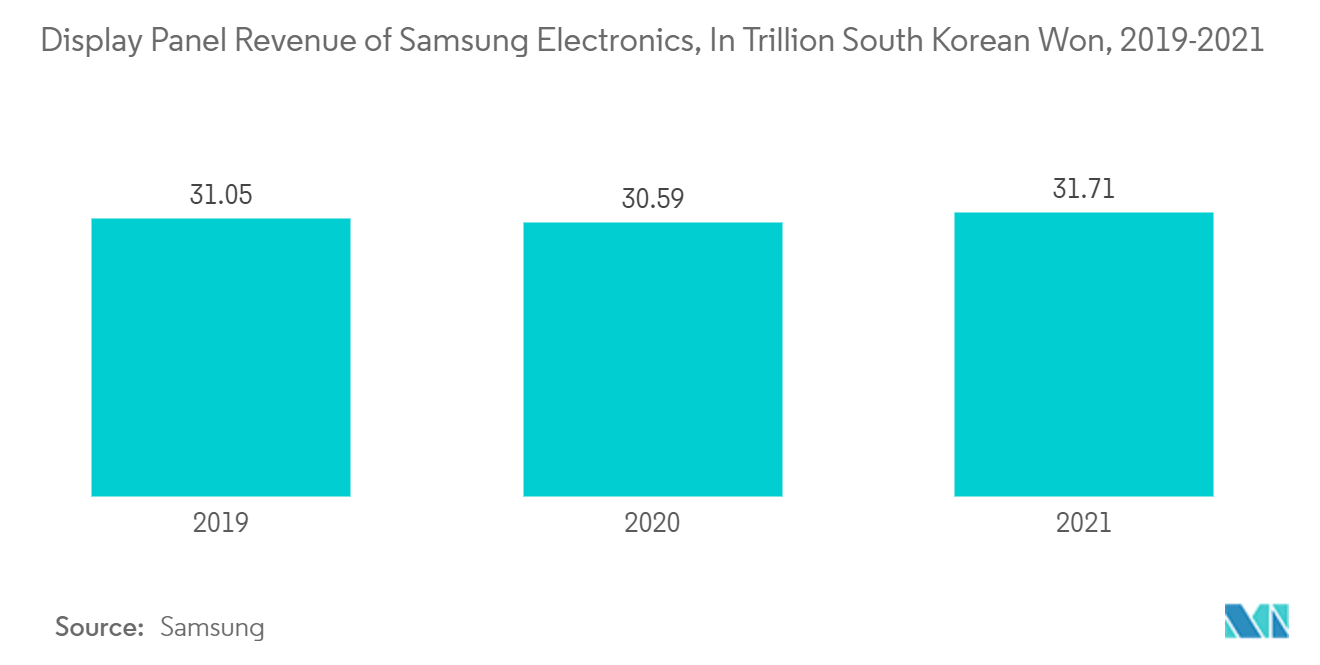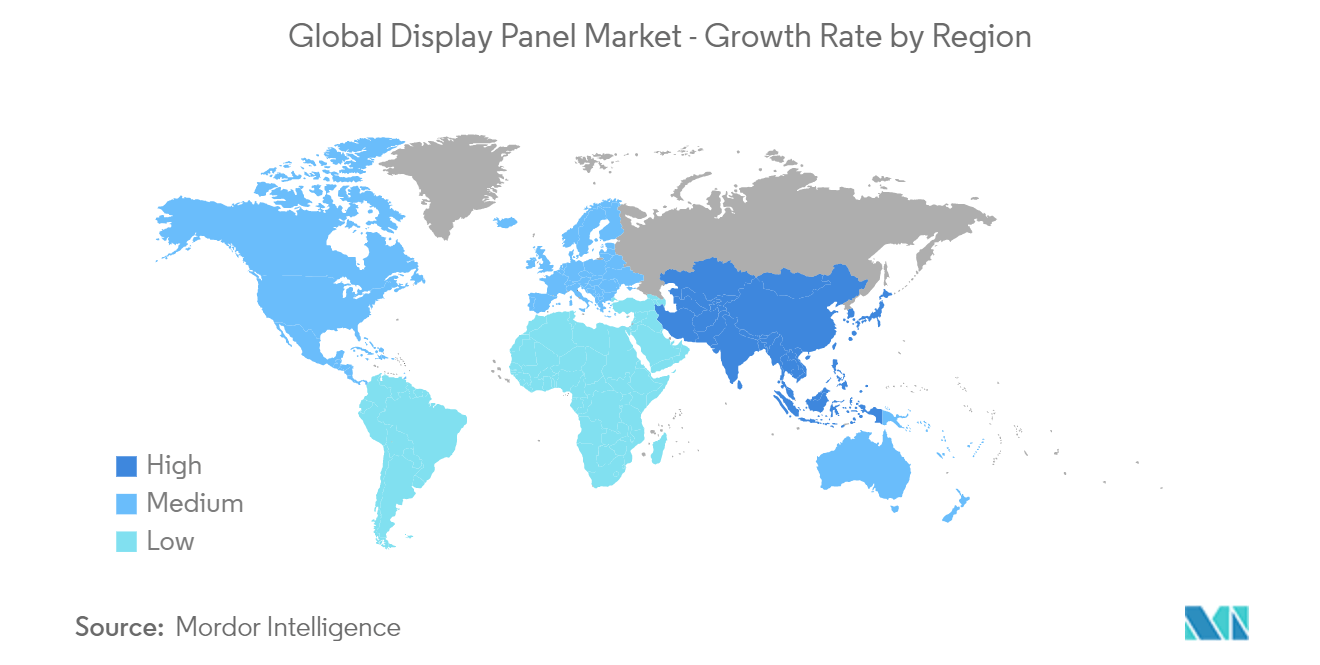Market Trends of Display Panel Industry
OLED Type of Display Panel to Hold a Significant Position
OLEDs are expected to replace existing technologies in the display ecosystem. Owing to this, many vendors started investing heavily in R&D related to OLED. OLED transparent displays are penetrating the market due to increasing demand for these displays from head-mounted display (HMD) vendors.
For instance, in April 2023, Samsung announced to invest USD 3 billion in OLED panels for laptops and tablets in South Korea. Similarly, in April 2022, Samsung announced a new project underway for future TV offerings. The project aims to make its quantum dot (QD)-OLED panels thinner than they are now. With this, the company will be eyeing a new possibility for its TV lineup - rollable screen TVs. The new panel types will also help cut down production costs.
Owing to success over battery life, in February 2022, LG Display won the contract to supply OLED panels based on low-temperature poly-crystalline oxide (LTPO) technology to Apple for the iPhone 14 series, which will be launched in the second half of 2022.
Moreover, several leading manufacturers focus on launching products with OLED displays to bring innovation and gain a competitive advantage. For instance, in May 2023, Samsung announced to release sensor OLED display at the SID Display Week. The display integrates the fingerprint scanner into the OLED screen, eliminating the need for smartphone brands to install a separate fingerprint scanner module under the screen.
Furthermore, in January 2023, LG Display announced releasing its third-generation OLED TV panel at CES 2023. Based on 'META Technology,' the company's newest OLED TV panel delivers the ultimate picture quality. The company's latest OLED displays achieve 60 percent brighter images and 30 percent wider viewing angles than conventional OLED displays, on top of improved energy efficiency. This release aims to strengthen its position in the large OLED panel industry.

India in the Asia Pacific region is Expected to Witness Significant Growth
Consumer spending in India is increasing, due to rising disposable income, due to which the demand for televisions is witnessing a high spike owing to the rising soccer fan base in countries such as India. As a result, the TV makers in India are launching larger screens with advanced technologies, which, in turn, is likely to boost the market growth in the country over the forecast period.
Furthermore, the changing behavior in TV connections is expected to drive market growth. Subscriptions, such as Netflix and Amazon Prime, have been made available for Smart and Android TVs, owing to which the demand is gaining high traction, thereby propelling the market growth.
According to IBEF, connected smart televisions are expected to reach approximately 40-50 million by 2025. 30% of the content viewed on this screen will be social media, gaming, and short video.
For instance, in May 2022, LG announced that the company is eyeing heavily OLED (organic light-emitting diode) Televisions as it plans to increase its footprint in India's growing premium Television segment. These days, many consumers are interested in buying bigger screens, especially after the pandemic when there is a limitation to cinema halls. Consumers increasingly gravitate toward premium TVs, and LG aims to grab the opportunity with the updated OLED TV range.
Similarly, in September 2022, Samsung India announced the launch of Wall All-In-One, a modular MicroLED that will revolutionize the future of displays, and Flip Pro, an interactive display that will take the educational experience to the next level. Available in 110" and 146" sizes, the wall all-in-one is optimized for corporate offices.
Also, Samsung is setting up India's first smartphone display manufacturing unit on the outskirts of Delhi. The South Korean company is investing over Rs 3,500 crore in this facility in Noida, per a regulatory filing with the Registrar of Companies (RoC). The plant would produce displays of mobile phones and IT displays and could later extend it to laptops and televisions.
Moreover, the government of India is offering incentives for chips and display unit manufacturing to strengthen its position, further supporting the display panel market growth. For instance, in September 2022, the Indian government announced increased financial incentives for setting up semiconductor manufacturing units and displays under USD 10 billion plan.


